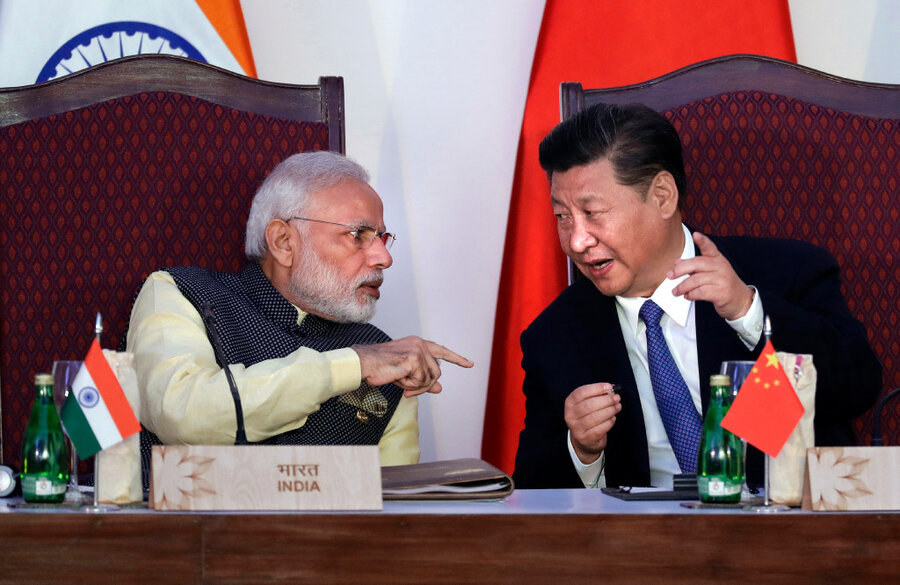Taking the high road in a Himalayan hostility
Loading...
For the past six weeks, the armies of India and China have been in a tense standoff over the control of a 104-square-mile plateau at about 11,000 feet in the Himalayas. When the only countries with more than a billion people are poised for war, the rest of the world should hope for restraint.
So far, the contest for patience goes to India. It has seen Chinese encroachment many times and watched in recent years as China intruded on the islands of others in East Asia. The two giants even fought a violent war in 1962 over Himalayan territory. India now prefers calm diplomacy over calamitous dispute.
In China, on the other hand, official media has been stoking nationalist fires against India. The warlike rhetoric has yet to provoke India even as China rushes more troops to the region.
China’s aspiration to assert itself as a global power lies at the root of the current confrontation. The standoff began June 16 when a Chinese military unit was caught building a road through the tiny kingdom of Bhutan in an area known as Doklam (or Donglang in Mandarin). India handles many of the foreign affairs of Bhutan, a legacy of British rule as well as Bhutan’s isolation and its own fears after the takeover of nearby Tibet by Communist China in the 1950s.
The new road is part of China’s grand plan known as the “One Belt, One Road” initiative to build a transportation corridor to Europe. The plan is more than economic. China seeks influence over other countries in the region and may be trying to pry Bhutan from India’s orbit. It is also angry that India did not attend the launch of the One Belt initiative in May. The project is a point of pride for Chinese President Xi Jinping as he consolidates power in the run-up to this fall’s Communist Party Congress. India was absent because China plans a road through a part of Pakistan claimed by India.
India’s restraint comes in part from a confidence that other countries, such as Japan and the United States, are challenging China’s territorial claims and aggression in Asia. China and India rely more than ever on global trade, and China is India’s largest trading partner. In addition, both countries have leaders at the helm occupied with internal reform. The two nuclear powers cannot let this military showdown escalate.
The two countries are ancient civilizations but with a key modern difference. One is a democracy, the other a dictatorship. India is used to resolving disputes by a peaceful contest of ideas. Its constructive diplomacy over the Bhutan face-off will hopefully win the day. And as winter approaches in the Himalayas, the two armies may need to retreat anyway. With patience, India and China can then have a fresh opportunity to resolve their differences over Bhutan’s territory peacefully.







